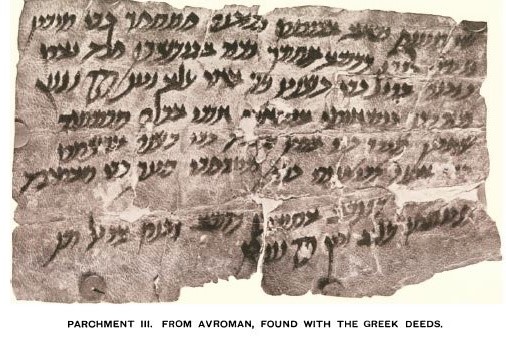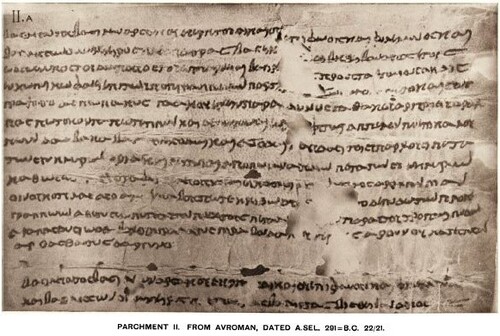The history of inhabitance in Hawraman goes back to the pre-historical times. The oldest monuments that show people's inhabitance found in the research done in Hawraman are related to the Old Stone Ages and according to archeologists they trace back to 40 thousand years to 12 thousand years ago. Among these, the "Hawraman documents" are among valuable pieces of evidence that were found at the beginning of the 20th century in Hawraman and were used in linguistic research and also the ancient history of Hawraman. According to the archeological investigations, the oldest people who inhabited this area belong to almost eight thousand years BC. These people's lives depended on keeping livestock and they were nomads. After settling down, however, they built Hawraman.
Hawraman documents were found in a jar in 1905 in a cave named "Shaho Mountain" near "Palangan" village which was the first castle of the Ardalan's reign, and "Tangiwar" in which a script belonging to the Assyrians was found, by one of the followers of "Sheikh Aladdin Naqshbandi" in a cave. At the beginning of the 20th century when "Dr. Saeed Khan Kurdistani" visited Marivan to do eye surgery for "Abbas Qoli Khan", he found the document and in 1913 he took it to London and gave it to the British Museum. This evidence contains three documents written on Ghazal's skin. Two of them were written in Greek and the third one was written in Arami language. All three documents were scripted in cuneiform during the "Parthians" era.

The first two documents were translated by the archeologist and encyclopedia editor, "Elis Mins" from the ancient languages and were published in the Hellenic Researching Magazine (in Greek). The history of these two documents is based on the history of the Seleucid Empire, one of them is as old as 87 to 88 years BC and the other one is 21 to 22 years BC. on the back of one of them, some words had been written in Parthian language which is a summary of the Greek script and perhaps it had been written before the Greek script.
The two first scripts were written during Ashk IX and the end of the reign of Ashk XIII. These two documents are about selling half of a Grape Garden named "Dadbakabag or Dadbakanara" in "Kophanis" village which is probably the same village as "Kopi" in Qaradagh located in the west of "Sharazour" plain.

The third document which is in the Parthian alphabet and language has a Parthian history and traces back to the first century AD (or perhaps 11 to 12 years BC) which is translated by A. Kavli. The third document is about selling half of a Grape Garden with some agriculture equipment from "Pataspak" son of "Tiren" to "Awil" son of "Bainin" for as much as 65 dirhams. In addition to the names of the seller and the buyer, there are several other names that belong to the witnesses of this deal. According to Professor Kavli, the third document of Hawraman is written in the Pahlavi Parthian language while Professor Mins believes it is close to the Kurdish language.
In fact, investigating these documents found in Hawraman from linguistic, historical, social relationships, and economical perspectives and the ancient religious beliefs of the people of the Middle East geographical region especially Hawraman in Kurdistan can bring the dark aspects of Kurdistan history into light.

There are many words, and particularly names of people can be seen that come from the culture and beliefs of the people inhabiting the Zagros Mountain chains. Words like "Aramst", "Ardin", "Arshtet" and "Dadbaga bag" are symbols of Ahura Mazda worshiping based on Mazdaism tradition in this region. From a linguistic perspective, these documents can be considered ancient evidence that is the result of a valuable culture. According to the third document found in Hawraman, two thousand and twenty years ago, a special type of script writing was popular among the ancestors of Kurds which was the Arami alphabet and it was used to write formal texts and documents. These documents prove the fact that there was a unified law among the people inhabiting Hawraman and in order to rent a Grape Garden in the area they had signed a contract having several witnesses signed and sealed by the government's representative. These documents also clarify that agriculture and gardening were of great importance at that time. Shortly, we can say that Hawraman documents are the symbol of an ancient history of inhabitance and civilization in this part of Kurdistan.








